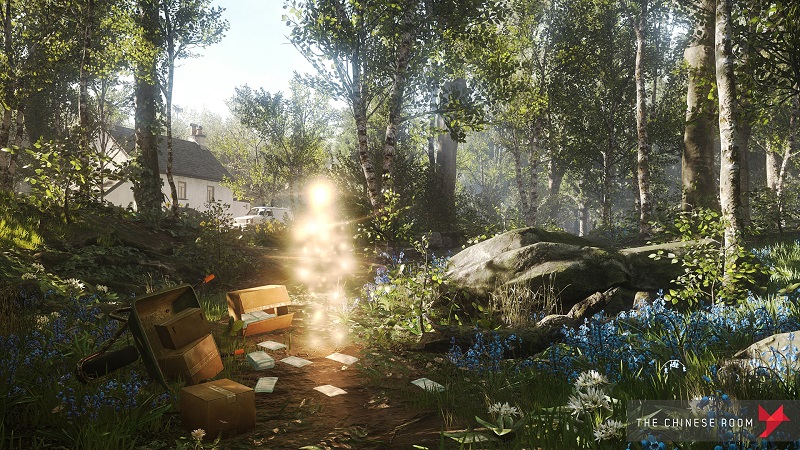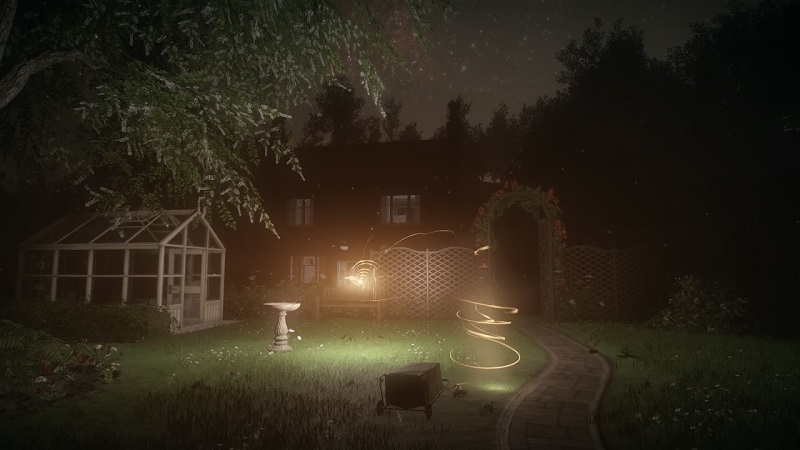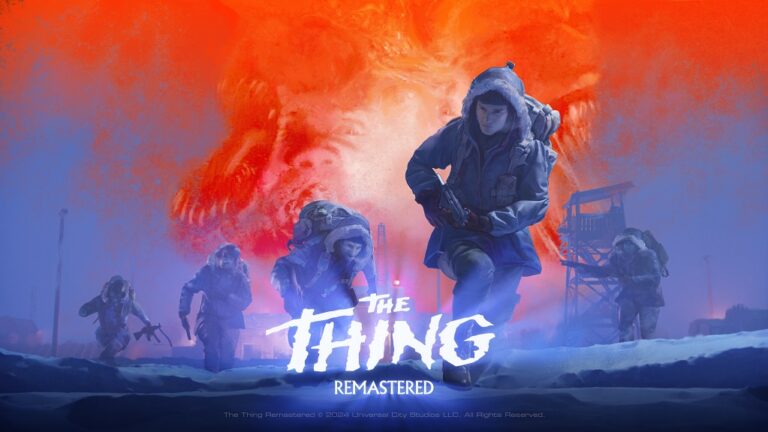
Everybody’s Gone to the Rapture is a different kind of game. Featuring no action-based gameplay, the mechanics are much like those featured in its spiritual predecessor, Dear Esther, also by The Chinese Room. But, unlike Dear Esther, ‘Rapture features a more character-driven story narrative, less linear game-play, and more player interaction.
“The nitrogen in our DNA, the calcium in our teeth, the iron in our blood, the carbon in our apple pies were made in the interiors of collapsing stars. We are made of star-stuff.”
― Carl Sagan, Cosmos
The story is told through a series of six chapters that focus on a specific character that once lived in this small English village, called Shropshire, which rests near a large observatory. With all of the characters having vanished without a trace, we seem to be witnessing echos of their recent lives, manifesting in the form of golden ribbons that take on a human-like shape. The primary game “mechanic” is to follow these glowing ribbons and witness as much of the story as possible. A secondary objective is the seeking out of radio and recording devices, which contain recordings that reveal parts of the story, as narrated by Kate, a scientist who has gone missing with everyone else. Players will confront themes of fear, anxiety, love, acceptance, and faith as they explore the empty houses and streets of this little town, and the last moments of the lives it affected.

Although the narrative is science-driven, it seems to establish a new form of spiritual experience not relying on superstitions or established religions. Kate becomes a form of prophet, having made first contact with the visiting entity, which seems to be made of pure information. Kate obsesses over its meaning and identity, polarizing those around her who would only see the entity as a threat. The entity, being pure information, takes the form of light in order to communicate with Kate. This also grants the creature the unique situation of being able to travel through signals far across time and space, and those very signals are captured and translated in the form of a firefly-like symbol, printed from dozens of inter-connected printers on the observatory lawn. The symbol becomes akin to a religious symbol, manifesting throughout the village as the story progresses.
Indeed, the entity seems to have inadvertently killed every living being in the village, and possibly the planet, by the mere fact of it being here. We see that people manifested flu-like symptoms and eventually passed away as an American outbreak response team readied to napalm the entire area.
But, the truth is something much different and much less tragic. The entity is star-stuff, as mentioned decades ago by Carl Sagan and echoed recently by Neil deGrasse Tyson. We are star-stuff, born in the explosion of the Big Bang, and rather being left to perish in our own tragic deaths, the entity has returned us to the stars in its exit from our world. This where the theme of ‘rapture’ plays in, but from that scientific perspective. A true sci-fi religion based upon meeting something as close to God as the universe can allow.

Despite having no actual living characters, the game itself is full of life. The sun is warm and bright. The village is quaint and welcoming. The trees sway in the breeze and soft particles fill the air. Although we see evidence of pandemic and fear, this is not the central focus of the game. It’s actually quite the opposite.This is where ‘Rapture succeeds. It is optimistic. It seems to embrace a positive view of our relationship with the universe, much like Carl Sagan and his sense of scientific spiritualism, his ‘star -stuff’ ideology. It feels refreshing in the post-apocalyptic genre, which has become bogged down with zombie violence and themes of world war destruction. The musical score, by Jessica Curry, also deserves recognition, for its blend of new age and gospel choir.
There have been some complaints about the walking pace of the playable character, but I never found it to be a problem. This seems like a conscious decision. In my opinion, having inserted an action game mechanic, such as the ability to run, would have been counter to the game’s design and storytelling direction. There’s nothing to run from, so you don’t need to run. I also notice that if you hold “R2” while walking, the character will walk slightly faster.
‘Rapture is alive, haunting, beautiful, perfectly scored, and is an experience unlike any other in this genre. It is heavy, engrossing, and emotional. It is a game that will stay with you for some time.
 (9 / 10)
(9 / 10)
 (9 / 10)
(9 / 10)



